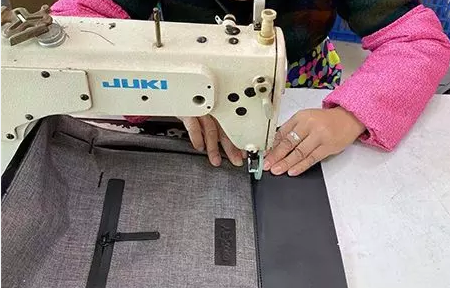
Location : Home > Info > Industry Info

- If you have ever wondered how a factory line can produce a backpack that is tailored to your specific needs and preferences, this blog post will give you some insights into the process. A custom backpack is not just a regular backpack with some added features or colors. It is a backpack that is designed and manufactured according to your specifications, such as the size, shape, material, style, functionality, and accessories. Here are the main steps involved in producing a custom backpack:
1. Design: The first step is to design the backpack based on your requirements. You can either choose from a range of existing models and customize them, or create your own design from scratch. You can use online tools or software to help you visualize and modify your design, or consult with a professional designer who can assist you. You can also select the type and quality of the material, the color scheme, the logo or embroidery, and any other details that you want to include in your backpack.
2. Cutting: The next step is to cut the material according to your design. This can be done manually or by using automated machines that can precisely cut the fabric, leather, or synthetic material. The cutting process also involves preparing the zippers, straps, buckles, pockets, and other components that will be attached to the backpack.
3. Sewing: The third step is to sew the pieces of material together to form the backpack. This can be done by skilled workers who use sewing machines or by using automated robots that can stitch the material with speed and accuracy. The sewing process also involves attaching the components and accessories to the backpack, such as the zippers, straps, buckles, pockets, etc.
4. Quality control: The fourth step is to check the quality of the backpack and ensure that it meets your expectations and standards. This can be done by inspecting the backpack for any defects, errors, or flaws in the material, stitching, or functionality. The quality control process also involves testing the backpack for durability, comfort, and performance under different conditions and scenarios.
5. Packaging and shipping: The final step is to package and ship the backpack to you. This can be done by using appropriate packaging materials that protect the backpack from damage or dirt during transit. The packaging process also involves labeling the backpack with your name, address, and order details. The shipping process involves choosing the best delivery method and carrier that can deliver your backpack to you in a timely and secure manner.
As you can see, producing a custom backpack is not a simple task. It requires careful planning, coordination, and execution of various steps and processes that involve different people, machines, and resources. However, the result is worth it: a backpack that is unique, personalized, and functional for you.









